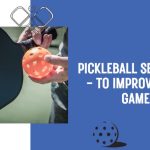Pickleball is quickly becoming one of the most popular sports in the world. Unfortunately, accidents can occur due to their fast-paced nature and agility requirements, leading to injuries.
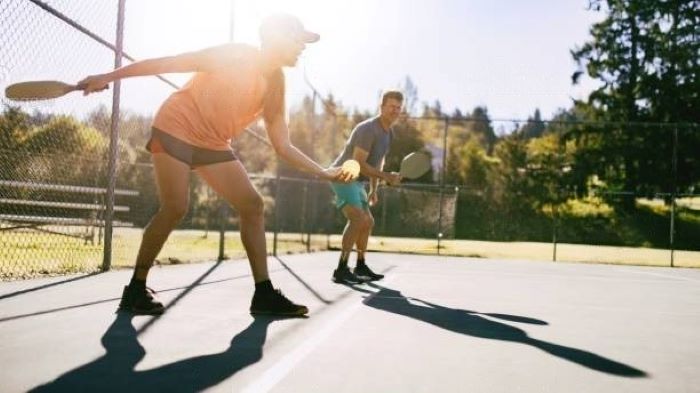
In this article, we will take a closer look at why pickleball injuries are on the rise, what some of the most common injuries are, how you can avoid them, and finally, provide tips on minimizing your risk of sustaining an injury while playing pickleball.
So, let’s get started!
Why There Are So Many Pickleball Injuries?
Pickleball is not without risks. According to a study published in The Journal of Emergency Medicine, there were 19,000 pickleball injuries in 2017, with 90% affecting people aged 50 and older.
Therefore, some of the reasons for so many pickleball injuries are –
Overuse Injuries
These injuries result from repeated stress on the same muscles, tendons, or joints over time. They can cause inflammation, pain, and reduced range of motion. Some overuse injuries in pickleball include shoulder sprains, rotator cuff tears, and pickleball elbows.
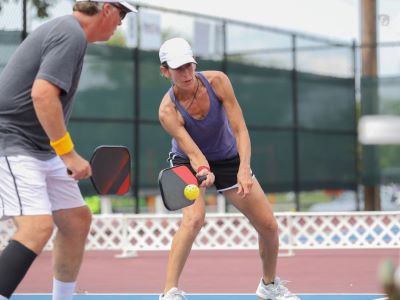
These injuries can be aggravated by poor technique, lack of warm-ups, or playing too frequently or intensely. If you have any signs of an overuse injury, you should stop playing and consult a doctor for diagnosis and treatment.
Impact Injuries
These injuries occur from direct contact with the ground, the ball, the paddle, or another player. These can cause bruises, cuts, abrasions, or fractures. Pickleball impact injuries include ankle sprains, wrist fractures, and heel bruising.
These injuries can be prevented by wearing proper footwear and protective gear and following the game’s rules. So, if you have any signs of an impact injury, you should seek medical attention as soon as possible to avoid complications.
Age-Related Factors
As people age, their bones become more brittle, their muscles lose strength and flexibility, and their balance and coordination decline. These factors make them more prone to injuries in any sport, including pickleball.

Some examples of age-related factors that increase pickleball injury risk are osteoporosis, arthritis, diabetes, and cardiovascular disease. Eventually, these factors can be managed by consulting a doctor before starting another sport, staying hydrated and nourished, and listening to one’s body.
Most Common Pickleball Injuries
Here are some common pickleball injuries –
| Injury | Description | Prevention | Treatment |
|---|---|---|---|
| Ankle Sprain | A ligament injury occurs when the ankle is twisted or rolled during a sudden change of direction or a fall. | RICE, anti-inflammatory medication, physical therapy, bracing, or taping. | Warm up before playing, stretch the calf muscles, and avoid sudden increases in intensity or duration of play. |
| Achilles Tendonitis or Rupture | An inflammation or tear of the tendon that connects the calf muscle to the heel bone. It can occur when the tendon is overstretched or overused during running or jumping activities. | Immobilization with a cast or splint, pain medication, and surgery (for displaced fractures). | RICE, anti-inflammatory medication, physical therapy, gentle stretching, and strengthening exercises. |
| Hamstring or Quadriceps Muscle Strain | A partial or complete tear of the muscle fibers in the back or front of the thigh. It can occur when the muscle is overstretched or contracted too forcefully during sprinting or changing direction. | RICE, anti-inflammatory medication, physical therapy, gentle stretching, and strengthening exercises. | Immobilization with a cast or splint, pain medication, and surgery (for displaced fractures). |
| Shoulder Impingement/Rotator Cuff Tear | A compression or tear of the tendons and muscles that surround the shoulder joint and help it rotate. It can occur when the shoulder is overstretched or torn by a sudden or forceful movement of the arm. | Warm up before playing, use proper technique, avoid overhead strokes if possible, and strengthen the shoulder muscles. | RICE, anti-inflammatory medication, physical therapy, corticosteroid injections, and surgery (for severe tears). |
| Pickleball Elbow | A type of tendinitis that affects the tendons that attach the forearm muscles to the elbow. It can occur when the elbow is repeatedly bent and straightened during a forehand or a backhand stroke. | Wear protective gear such as wrist guards or gloves, and avoid falling on an outstretched hand. | RICE, anti-inflammatory medication, physical therapy, elbow brace or strap, corticosteroid injections. |
| Wrist Fracture | A break in one of the bones of the wrist, usually the radius or the ulna. It can occur when the wrist is bent backward or forward during a fall or a collision. | Immobilization with a cast or splint, pain medication, and surgery (for displaced fractures). | Immobilization with a cast or splint, pain medication, surgery (for displaced fractures). |
| Heel Bruising | Wear proper footwear with adequate cushioning and arch support, and avoid playing on hard surfaces if possible. | Wear proper footwear with adequate cushioning and arch support, and avoid playing on hard surfaces if possible. | RICE, anti-inflammatory medication, heel pads or cups, orthotics. |
* RICE – Rest, ice, compression, elevation
Tips to Minimize Pickleball Injuries
Pickleball is a sport that can cause injuries, especially for seniors. Some of the most common pickleball injuries are Achilles tendonitis, rotator cuff and shoulder sprains, pickleball elbow, impact injuries, and heel bruising. These injuries can be caused by overuse, poor technique, improper equipment, or accidents.
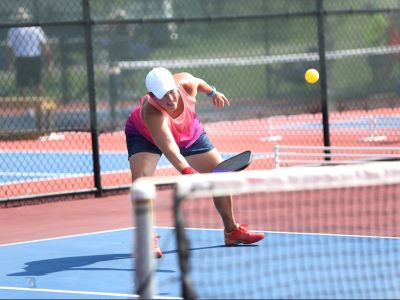
Firstly, to minimize pickleball injuries, you should follow some simple tips and precautions, such as:
1. Recognize Physical Limitations
You should be aware of your physical abilities and limitations and play accordingly. Avoid competing with players younger or more skilled than yourself or pushing yourself out of your comfort zone. You should also avoid playing when tired, sick, or injured, as this can increase your risk of injury.
2. Invest Time in Warm-Ups
Before starting a game, you should warm up your body by doing light cardio exercises, such as jogging, skipping, or jumping jacks. It can increase blood flow and oxygen delivery to your muscles and prepare them for the activity. You should also practice gentle strokes with your paddle to get used to the motion and the ball.
3. Use the Right Equipment
Choose a paddle that suits your skill level, grip size, and weight preference. A paddle that is too heavy or too light can cause stress on your arm and elbow. You should also wear proper footwear that provides adequate cushioning, arch support, and traction. Avoid playing on hard or uneven surfaces that can cause impact injuries or falls.
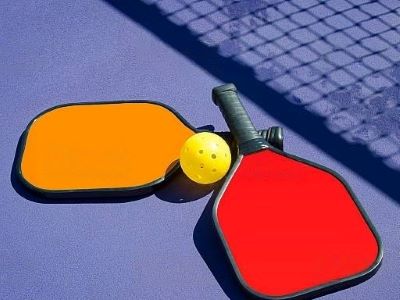
4. Don’t Ignore Your Form
You should learn the correct technique for each stroke, such as the serve, forehand, backhand, volley, and overhead. Avoid excessive wrist motion or overhead strokes that can cause pickleball elbow or shoulder impingement. Also, you should maintain a balanced stance and avoid twisting or bending your back too much.
5. Know the Role Exercise Recovery
You should drink plenty of water before, during, and after playing pickleball to prevent dehydration and heatstroke. Furthermore, make sure that you take breaks between games and that you do not play for too long or too intensely.
You should listen to your body and stop playing if you feel pain or discomfort. Further, you should also allow yourself to heal properly if you have any injury and consult a doctor if needed.
FAQs
There were 19,000 pickleball injuries 2019, most strains, sprains, and fractures. The injury rate for pickleball was 0.55% in 2019, meaning one in every 182 players got injured. Players should warm up, use proper technique and equipment, and hydrate and rest to avoid injuries.
No, pickleball is not a high-impact sport. It is considered a low-impact sport due to the slow pace and minimal contact between players.
Pickleball is generally more forgiving on the knees than tennis due to the smaller court size and the slower speed of play. It means that players don’t have to move around as much during a game, which can lessen the strain on their joints.
Let’s, Wrap Up!
Overall, the conclusion about pickleball injuries on the rise is that although this sport has become increasingly popular among all age groups, it can also be dangerous. Players need to wear proper protective equipment and use the correct technique when playing to reduce their risk of injury.
Furthermore, players must stay informed about the risks associated with pickleball and take necessary precautions to remain safe while enjoying the sport.
Be safe and happy pickleballing!

I am a professional physiotherapist and the author of the BallSportsPro. I worked with athletes of all levels, from amateur to professional, and i helped them overcome injuries and improve their performance. I am a certified Pickleball instructor and has been playing the sport for over 10 years.


